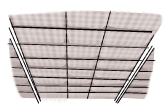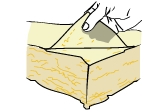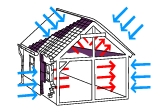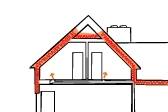Reflective foil insulation
Foil-type insulation is reflective insulation, designed to prevent radiated heat from entering your home. This type of insulation is most often used in...
Insulation maintenance
Feeling a chill in your home? Think your heater's being overworked? It could be that you need a top up on your insulation, but...
Insulation regulations
Depending on what the climate's like where you live in Australia, different regulations apply to the amount and type of insulation that needs to...
Energy efficient insulation
Having the right insulation can make a huge difference to the amount of energy your home needs to stay at a comfortable temperature, and...
Performance considerations for insulation
There's a bit more to insulating a home well than just sticking some batts in your wall cavities. Find out what else affects how...
Thermal insulation materials
Many different materials can be used for insulation, including rock wool, glass wool, sheep's wool, cellulose, polystyrene and straw bales, among others. Find out...
Insulation for different areas
Find out what sort of insulation is required in different parts of your home, and why. Learn more about roof, wall, under-floor, door and...
Types of thermal insulation
There are all kinds of options when it comes to thermal insulation. Find out what sorts of insulation are available, and what's likely to...
Insulation & passive design
Effective insulation plays a starring role in how well a house is able to separate the climate inside from that outside - and is...
How to choose insulation
Different sorts of insulation vary in terms of how effective they are at controlling heat and sound, how they can be installed and how...















